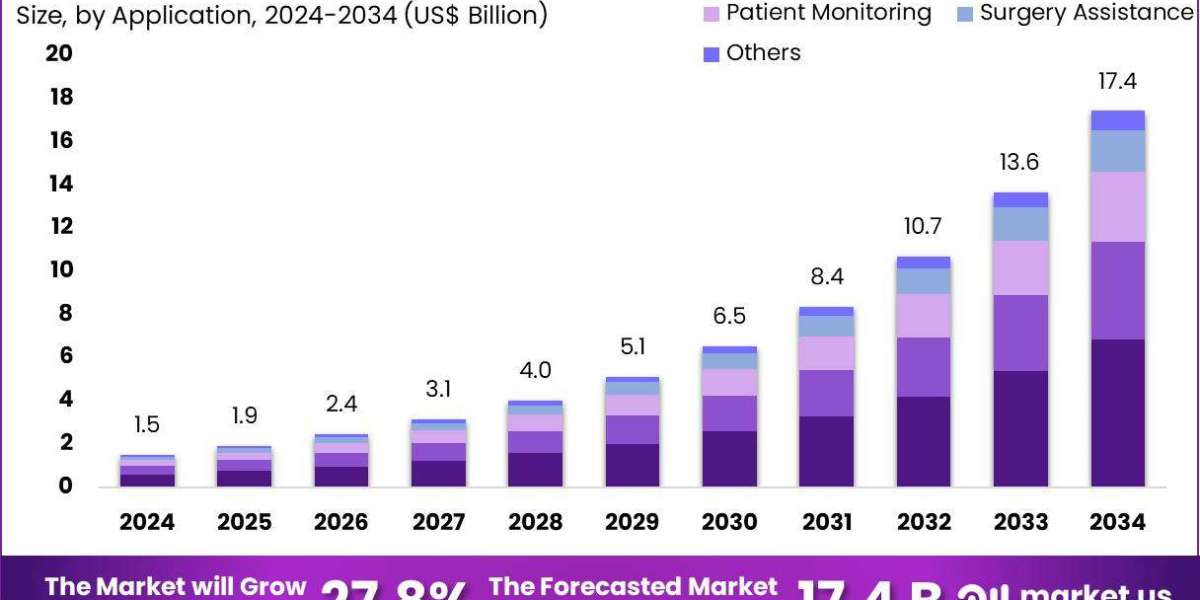Overview
June 5 2025 – The global humanoid healthcare assistive robot market is projected to grow significantly, reaching approximately US$ 17.4 billion by 2034, up from US$ 1.5 billion in 2024. This represents a CAGR of 27.8% over the forecast period. The market’s expansion is primarily driven by the rising demand for healthcare services, advancements in artificial intelligence and robotics, and the push for efficient patient care delivery systems.
A major factor fueling market growth is the increasing global demand for healthcare services, especially among aging populations. As elderly individuals require more care, humanoid robots are becoming a valuable asset. These robots can assist in hospitals and senior care facilities by performing essential tasks such as medication reminders, patient monitoring, and mobility support. Their ability to handle these tasks helps reduce the burden on healthcare staff and ensures patients receive consistent care.
Recent breakthroughs in AI and robotics have enhanced the performance and reliability of humanoid healthcare robots. These technologies enable robots to interact naturally with patients, adapt to various medical settings, and perform tasks with precision. As a result, healthcare institutions are increasingly adopting these robots to improve service quality and operational efficiency. Their ability to learn and respond to environmental cues adds a dynamic edge to patient interaction and care.
Humanoid robots play a crucial role in improving the efficiency of healthcare delivery. By automating routine and administrative tasks, they allow medical professionals to focus more on diagnosis and treatment. In some cases, robots are also assisting in surgeries and providing emotional support to patients, especially those in long-term care. Their presence helps optimize workflow, reduce staff fatigue, and enhance the overall patient experience.
Support from global health organizations has encouraged the integration of robotics in medical systems. These institutions highlight the importance of AI in transforming patient care. However, several challenges remain. High acquisition costs, the need for specialized training, and data security concerns could hinder market penetration. Addressing these issues will be vital for the widespread adoption of humanoid healthcare assistive robots in the coming decade.
Key Takeaways
- In 2024, the humanoid healthcare assistive robot market earned US$1.5 billion, growing rapidly with a projected CAGR of 27.8% through 2033.
- By 2033, experts anticipate the market will soar to US$17.4 billion, driven by increasing demand for automation in healthcare services globally.
- Among product types, hardware led the market in 2023, accounting for 52.6% of total revenue due to high equipment and component costs.
- In terms of application, elderly care dominated with a 39.4% market share, reflecting the growing need for robotic support in aging populations.
- Rehabilitation, patient monitoring, and surgery assistance also contributed to market growth, but none surpassed elderly care in terms of overall share.
- Hospitals were the top end-user segment in 2024, generating 48.3% of market revenue by leveraging robots for efficiency and improved patient outcomes.
- Other end-users included rehabilitation centers and home care settings, though hospitals clearly led in early adoption of humanoid healthcare robots.
- Regionally, North America held the largest share in 2024 at 52.6%, driven by advanced infrastructure and high healthcare investment.
- North America's lead is attributed to strong R&D, rising geriatric population, and early integration of robotics in medical systems.
- Overall, the humanoid healthcare assistive robot market is poised for significant growth, reshaping care delivery across multiple healthcare settings worldwide.
Get Sample Report: https://market.us/report/global-humanoid-healthcare-assistive-robot-market/request-sample/














